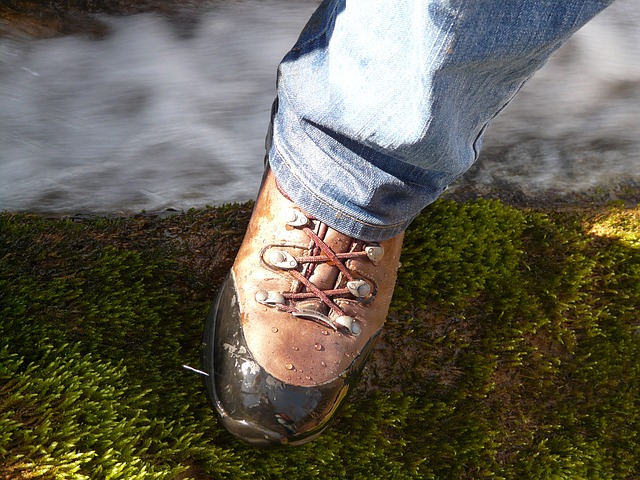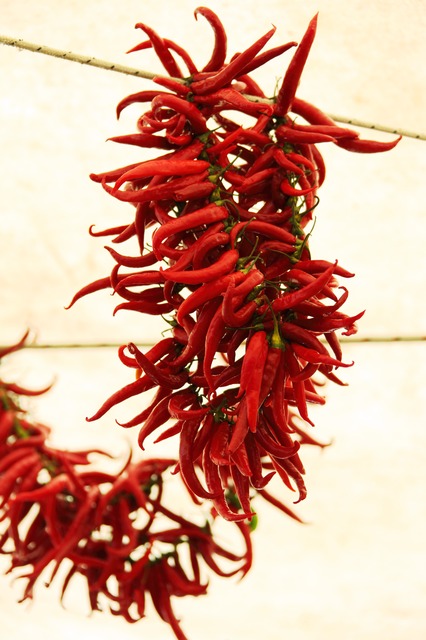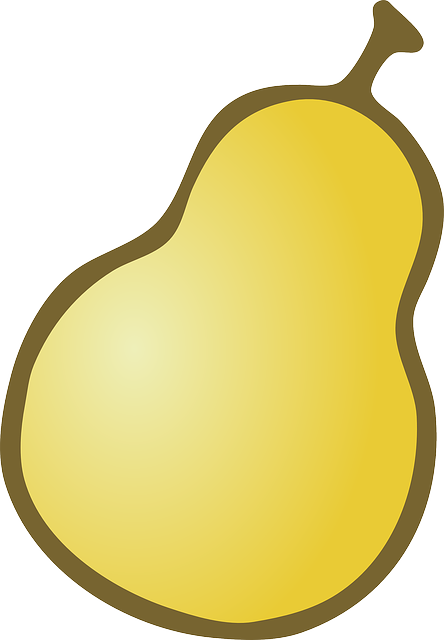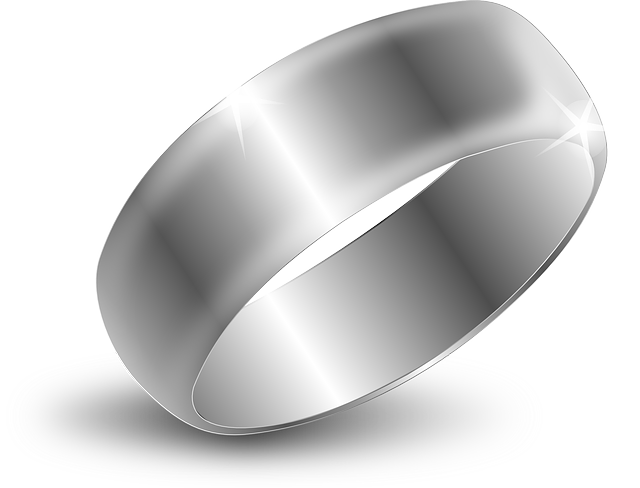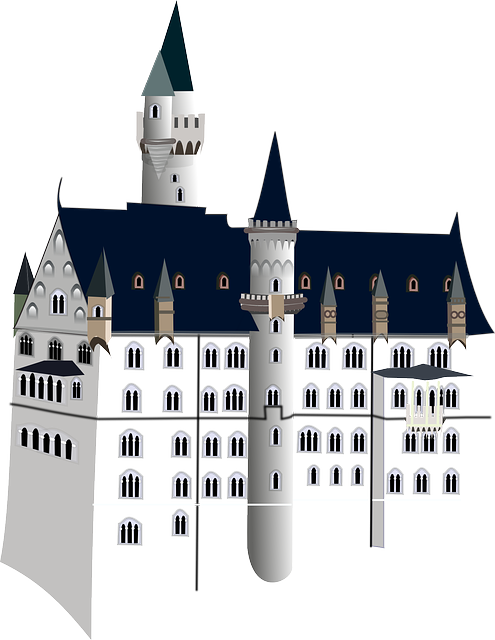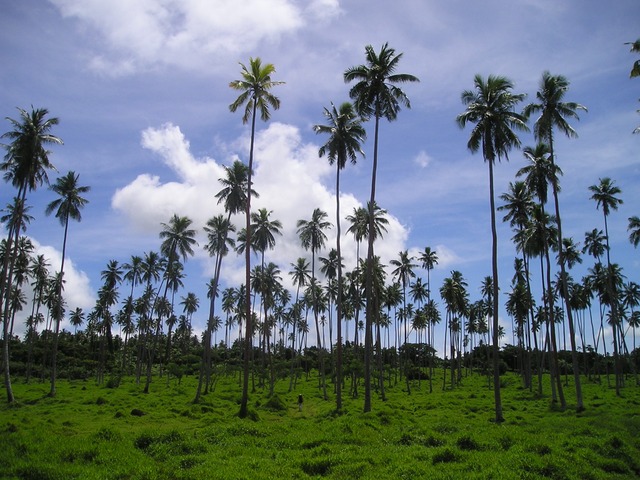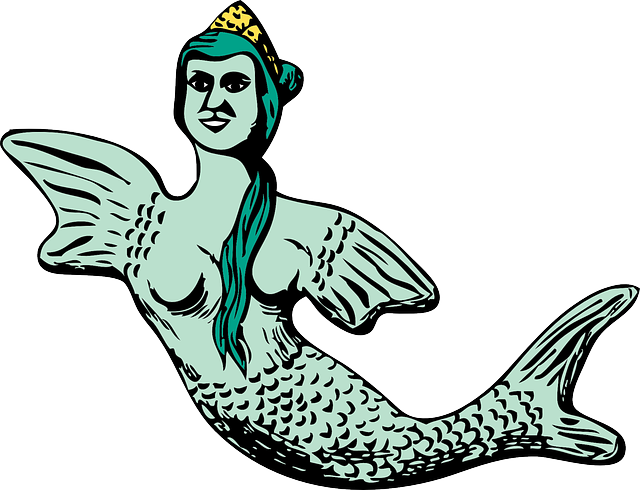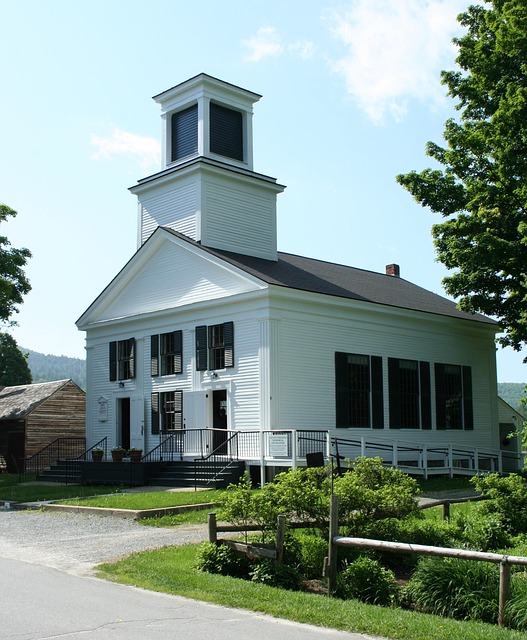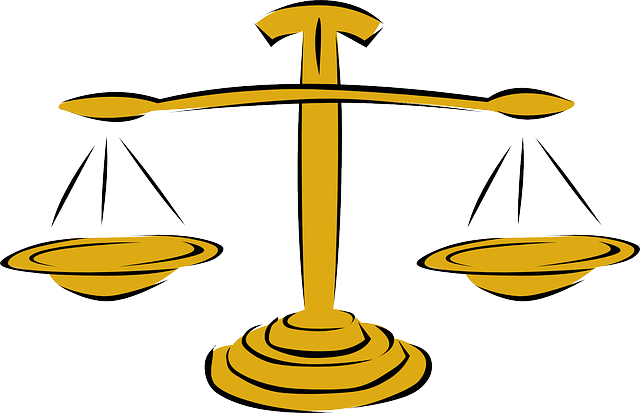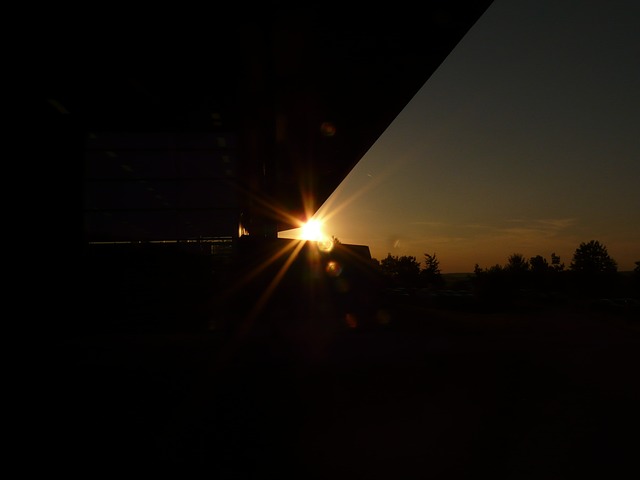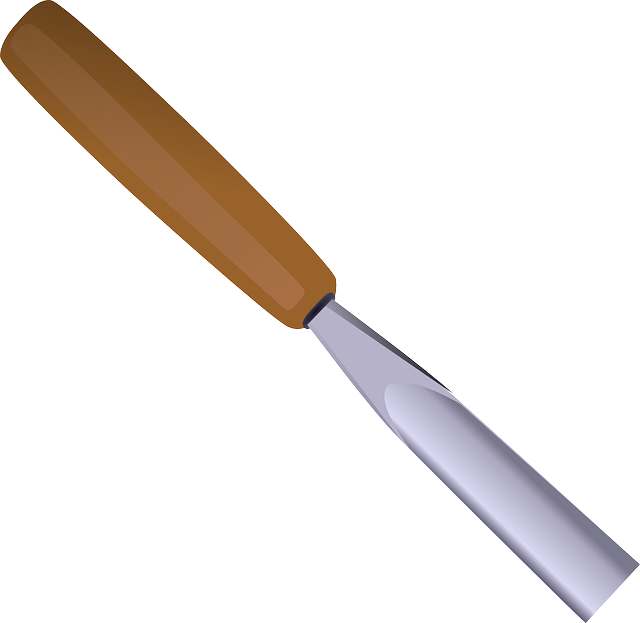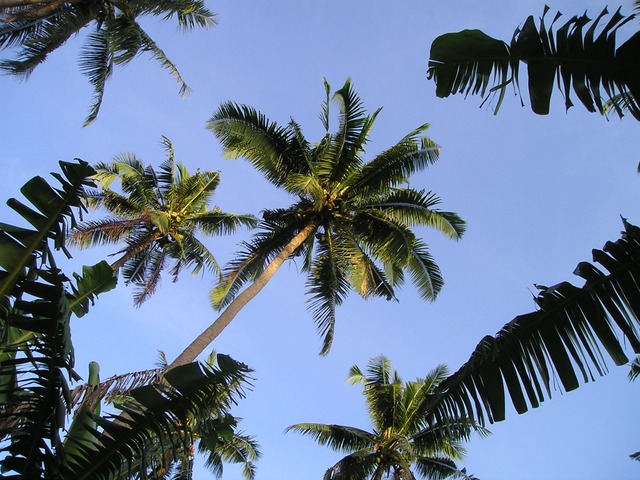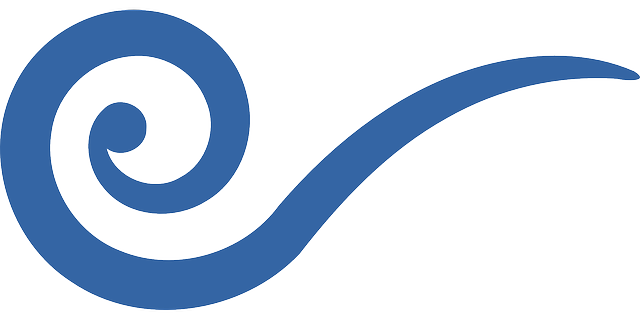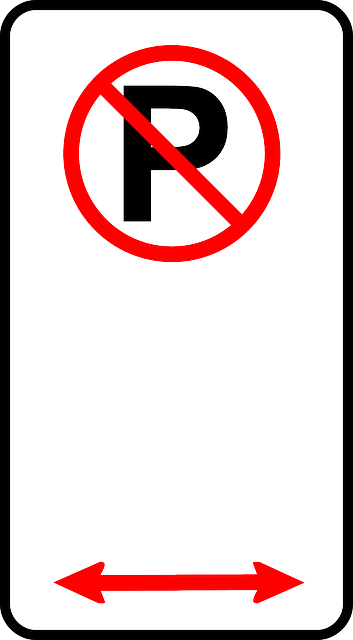أمازون (نهر)
| Amazon River | |
|---|---|
|
Amazon River near Indiana, Peru
| |
|
Amazon River and its drainage basin
| |
| الاسم المحلي | Amazonas |
| المسقط | |
| Country | Brazil, Colombia, Peru |
| City |
Iquitos (Peru); Leticia (Colombia); Tabatinga (Brazil); Tefé (Brazil); Itacoatiara (Brazil) Parintins (Brazil); Óbidos (Brazil); Santarém (Brazil); Almeirim (Brazil); Macapá (Brazil); Manaus (Brazil) |
| السمات الطبيعية | |
| المنبع | Río Mantaro |
| ⁃ المسقط | Huancayo, Huancayo Province, Peru |
| ⁃ الإحداثيات | |
| ⁃ المنسوب | 5,220 م (17,130 قدم) |
| المصب | Atlantic Ocean |
- المسقط |
Brazil |
- الإحداثيات |
Coordinates: |
- المنسوب |
0 م (0 قدم) |
| الطول | 7,000 kم (4,300 ميل) |
| مساحة الحوض | 7,050,000 kم2 (7.59×1013 قدم2) |
| التدفق | |
| ⁃ المتوسط | 209,000 م3/ث (7,400,000 قدم3/ث) |
| ⁃ أدنى تدفق | 180,000 م3/ث (6,400,000 قدم3/ث) |
| ⁃ أقصى تدفق | 340,000 م3/ث (12,000,000 قدم3/ث) |
| سمات الحوض | |
| الروافد | |
| - اليسرى | Marañón, Napo, Japurá/Caquetá, Rio Negro/Guainía, Putumayo, Trombetas |
| - اليمنى | Ucayali, Javary, Juruá, Purús, Madeira, Tapajós, Xingu |
The Amazon River (UK //, الأمريكي //; Spanish and بالپرتغالية: Amazonas) in South America is the largest river by discharge volume of water in the world, and by some definitions it is the longest.
The headwaters of the Apurímac River on Nevado Mismi had been considered for nearly a century as the Amazon's most distant source, until a 2014 study found it to be the headwaters of the Mantaro River on the Cordillera Rumi Cruz in Peru. The Mantaro and Apurímac join, and with other tributaries form the Ucayali River, which in turn meets the Marañón River upstream of Iquitos, Peru, to form what countries other than Brazil consider to be the main stem of the Amazon. Brazilians call this section the Solimões River above its confluence with the Rio Negro to form what Brazilians call the Amazon at the Meeting of Waters (بالپرتغالية: Encontro das Águas) at Manaus, the largest city on the river.
At an average discharge of about 209,000 متر مكعب لكل ثانية (7,400,000 قدم3/ث; 209,000,000 ل/ث; 55,000,000 جالون أمريكي/ثانية)—approximately 6,591 كيلومتر مكعب لكل سنة (1,581 ميل3/سنة), greater than the next seven largest independent rivers combined—the Amazon represents 20% of the global riverine discharge to the ocean. The Amazon basin is the largest drainage basin in the world, with an area of approximately 7,050,000 kiloمتر مربعs (2,720,000 ميل2). The portion of the river's drainage basin in Brazil alone is larger than any other river's basin. The Amazon enters Brazil with only one-fifth of the flow it finally discharges into the Atlantic Ocean, yet already has a greater flow at this point than the discharge of any other river.
أصل الاسم
The Amazon was initially known by Europeans as the Marañón, and the Peruvian part of the river is still known by that name today. It later became known as Rio Amazonas in Spanish and Portuguese, and Amazon River in English.
The name Rio Amazonas was given after native warriors attacked a 16th-century expedition by Francisco de Orellana. The warriors were led by women, reminding de Orellana of the Amazon warriors, a tribe of women warriors related to Iranian Scythians and Sarmatians mentioned in Greek mythology.
The word Amazon itself may be derived from the Iranian compound *ha-maz-an- "(one) fighting together" or ethnonym *ha-mazan- "warriors", a word attested indirectly through a derivation, a denominal verb in Hesychius of Alexandria's gloss "ἁμαζακάραν· πολεμεῖν. Πέρσαι" ("hamazakaran: 'to make war' in Persian"), where it appears together with the Indo-Iranian root *kar- "make" (from which Sanskrit karma is also derived).
ثاني أطول الانهار الرئيسية في العالم بعد نهر النيل يبلغ طوله 6463 كم وينبع من جبال الأنديز ويصب في المحيط الاطلسي ويقع في قارة اميركا الجنوبية.
التاريخ
وصول الأوروپيين
الاستكشاف
Gonzalo Pizarro set off in 1541 to explore east of Quito into the South American interior in search of El Dorado, the "city of gold" and La Canela, the "valley of cinnamon". He was accompanied by his second-in-command Francisco de Orellana. After 170 kiloمترs (110 ميل), the Coca River joined the Napo River (at a point now known as Puerto Francisco de Orellana); the party stopped for a few weeks to build a boat just upriver from this confluence. They continued downriver through an uninhabited area, where they could not find food. Orellana offered and was ordered to follow the Napo River, then known as Río de la Canela ("Cinnamon River") and return with food for the party. Based on intelligence received from a captive native chief named Delicola, they expected to find food within a few days downriver by ascending another river to the north.
الاستكشاف الفهمي
Early scientific, zoological and botanical exploration of the Amazon River and basin took place from the 18th century through the first half of the 19th century.
- Charles Marie de La Condamine explored the river in 1743.
- Alexander von Humboldt, 1799–1804
- Johann Baptist von Spix and Carl Friedrich Philipp von Martius, 1817–1820
- Georg von Langsdorff, 1826–1828
- Henry Walter Bates and Alfred Russel Wallace, 1848–1859
- Richard Spruce, 1849–1864
الاستغلال والاستيطان بعد الاستعمار
المسار
المنابع
الأمازون الأعلى أوسوليمويس
Although the Ucayali–Marañón confluence is the point at which most geographers place the beginning of the Amazon River proper, in Brazil the river is known at this point as the Solimões das Águas. The river systems and flood plains in Brazil, Peru, Ecuador, Colombia and Venezuela, whose waters drain into the Solimões and its tributaries, are called the "Upper Amazon".
الأمازون السفلي
المصب
Belém is the major city and port at the mouth of the river at the Atlantic Ocean. The definition of where exactly the mouth of the Amazon is located, and how wide it is, is a matter of dispute, because of the area's peculiar geography. The Pará and the Amazon are connected by a series of river channels called furos near the town of Breves; between them lies Marajó, the world's largest combined river/sea island.
الجسور
There are no bridges across the entire width of the river. This is not because the river would be too wide to bridge; for most of its length, engineers could build a bridge across the river easily. For most of its course, the river flows through the Amazon Rainforest, where there are very few roads and cities. Most of the time, the crossing can be done by a ferry, so there is no need to build a bridge. The Manaus Iranduba Bridge linking the cities of Manaus and Iranduba spans the Rio Negro (a tributary of the Amazon).
الخلاف حول الطول
While debate as to whether the Amazon or the Nile is the world's longest river has gone on for many years, the historic consensus of geographic authorities has been to regard the Amazon as the second longest river in the world, with the Nile being the longest. However, the Amazon has been reported as being anywhere between 6,275 and 7,025 kiloمترs (3,899 and 4,365 ميل) long. It is often said to be "at least" 6,400 kiloمترs (4,000 ميل) long. The Nile is reported to be anywhere from 5,499 to 7,088 kiloمترs (3,417 to 4,404 ميل). Often it is said to be "about" 6,650 kiloمترs (4,130 ميل) long. There are many factors that can affect these measurements, such as the position of the geographical source and the mouth, the scale of measurement, and the length measuring techniques (for details see also List of rivers by length).
المفيض
The Amazon basin, the largest in the world, covers about 40% of South America, an area of approximately 7,050,000 kiloمتر مربعs (2,722,020 ميل2). It drains from west to east, from Iquitos in Peru, across Brazil to the Atlantic. It gathers its waters fromخمسة degrees north latitude to 20 degrees south latitude. Its most remote sources are found on the inter-Andean plateau, just a short distance from the Pacific Ocean.
الفيضان
Not all of the Amazon's tributaries flood at the same time of the year. Many branches begin flooding in November and might continue to rise until June. The rise of the Rio Negro starts in February or March and begins to recede in June. The Madeira River rises and falls two months earlier than most of the rest of the Amazon river.
الجيولوجيا
The Amazon River originated as a transcontinental river in the Miocene epoch between 11.8 million and 11.3 million years ago and took its present shape approximately 2.4 million years ago in the Early Pleistocene.
The proto-Amazon during the Cretaceous flowed west, as part of a proto-Amazon-Congo river system, from the interior of present-day Africa when the continents were connected, forming western Gondwana. 80 million years ago, the two continents split. Fifteen million years ago, the main tectonic uplift phase of the Andean chain started. This tectonic movement is caused by the subduction of the Nazca Plate underneath the South American Plate. The rise of the Andes and the linkage of the Brazilian and Guyana bedrock shields,[] blocked the river and caused the Amazon Basin to become a vast inland sea. Gradually, this inland sea became a massive swampy, freshwater lake and the marine inhabitants adapted to life in freshwater.[]
Eleven to ten million years ago, waters worked through the sandstone from the west and the Amazon began to flow eastward, leading to the emergence of the Amazon rainforest. During glacial periods, sea levels dropped and the great Amazon lake rapidly drained and became a river, which would eventually become the world's largest, draining the most extensive area of rainforest on the planet.
Paralleling the Amazon River is a large aquifer, dubbed the Hamza River, the discovery of which was made public in August 2011.
المناطق المحمية
| الاسم | البلد | الإحداثيات | الصورة | ملاحظات |
|---|---|---|---|---|
| Allpahuayo-Mishana National Reserve | Peru | |||
| Amacayacu National Park | Colombia | |||
| Amazônia National Park | Brazil | |||
| Anavilhanas National Park | Brazil |
النبيت والوحيش
النبيت
الوحيش
More than one-third of all known species in the world live in the Amazon rainforest, a giant tropical forest and river basin with an area that stretches more than 5,400,000 kiloمتر مربعs (2,100,000 ميل2). It is the richest tropical forest in the world in terms of biodiversity. There are over 3,000 species of fish currently recognised in the Amazon basin, with more being discovered every year. In addition to the thousands of species of fish, the river supports crabs, algae, and turtles.
الثدييات
Along with the Orinoco, the Amazon is one of the main habitats of the boto, also known as the Amazon river dolphin (Inia geoffrensis). It is the largest species of river dolphin, and it can grow to lengths of up to 2.6 مترs (8 قدم 6 بوصة). The colour of its skin changes with age; young animals are gray, but become pink and then white as they mature. The dolphins use echolocation to navigate and hunt in the river's tricky depths. The boto is the subject of a legend in Brazil about a dolphin that turns into a man and seduces maidens by the riverside.
The tucuxi (Sotalia fluviatilis), also a dolphin species, is found both in the rivers of the Amazon basin and in the coastal waters of South America. The Amazonian manatee (Trichechus inunguis), also known as "seacow", is found in the northern Amazon River basin and its tributaries. It is a mammal and a herbivore. Its population is limited to freshwater habitats, and, unlike other manatees, it does not venture into salt water. It is classified as vulnerable by the International Union for Conservation of Nature.
The Amazon and its tributaries are the main habitat of the giant otter (Pteronura brasiliensis). Sometimes known as the "river wolf," it is one of South America's top carnivores. Because of habitat destruction and hunting, its population has dramatically decreased. It is now listed on Appendix I of the Convention on International Trade in Endangered Species (CITES), which effectively bans international trade.
الطيور
This section requires expansion. (February 2017)
|
الزواحف
The anaconda is found in shallow waters in the Amazon basin. One of the world's largest species of snake, the anaconda spends most of its time in the water with just its nostrils above the surface. Species of caimans, that are related to alligators and other crocodilians, also inhabit the Amazon as do varieties of turtles.
الأسماك
The Amazonian fish fauna is the centre of diversity for neotropical fishes. 5,600 species are currently known, and approximately fifty new species are discovered each year. The arapaima, known in Brazil as the pirarucu, is a South American tropical freshwater fish, one of the largest freshwater fish in the world, with a length of up to 15 قدم (4.6 م). Another Amazonian freshwater fish is the arowana (or aruanã in Portuguese), such as the silver arowana (Osteoglossum bicirrhosum), which is a predator and very similar to the arapaima, but only reaches a length of 120 centiمترs (3.9 قدم). Also present in large numbers is the notorious piranha, an omnivorous fish that congregates in large schools and may attack livestock and even humans. There are approximately 30 to 60 species of piranha. However, only a few of its species are known to attack humans, most notably Pygocentrus nattereri, the red-bellied piranha. The candirú, native to the Amazon River, is a species of parasitic fresh water catfish in the family Trichomycteridae, just one of more than 1200 species of catfish in the Amazon basin. Other catfish 'walk' overland on their ventral fins, while the kumakuma (Brachyplatystoma filamentosum), aka piraiba or "goliath catfish", can reach 3.6 مترs (12 قدم) in length and 200 kiloغرامs (440 رطل) in weight.
The electric eel (Electrophorus electricus) and more than 100 species of electric fishes (Gymnotiformes) inhabit the Amazon basin. River stingrays (Potamotrygonidae) are also known. The bull shark (Carcharhinus leucas) has been reported 4,000 kiloمترs (2,500 ميل) up the Amazon River at Iquitos in Peru.
الفراش
Microbiota
Freshwater microbes are generally not very well known, even less so for a pristine ecosystem like the Amazon. Recently, metagenomics has provided answers to what kind of microbes inhabit the river. The most important microbes in the Amazon River are Actinobacteria, Alphaproteobacteria, Betaproteobacteria, Gammaproteobacteria and Crenarchaeota.
الروافد الرئيسية
The Amazon has over 1,100 tributaries, 12 of which are over 1,500 kiloمترs (4,900,000 قدم) long. Some of the more notable ones are:
- Branco
- Casiquiare canal
- Caquetá
- Huallaga
- Putumayo (or Içá River)
- Javary (or Yavarí)
- Juruá
- Madeira
- Marañón
- Morona
- Nanay
- Napo
- Negro
- Pastaza
- Purús
- Tambo
- Tapajós
- Tigre
- Tocantins
- Trombetas
- Ucayali
- Xingu
- Yapura
قائمة حسب الطول
- 6,400 kم (4,000 ميل) (6,275 to 7,025 kم (3,899 to 4,365 ميل)) – Amazon, South America
- 3,250 kم (2,020 ميل) – Madeira, Bolivia/Brazil
- 3,211 kم (1,995 ميل) – Purús, Peru/Brazil
- 2,820 kم (1,750 ميل) – Japurá or Caquetá, Colombia/Brazil
- 2,639 kم (1,640 ميل) – Tocantins, Brazil
- 2,627 kم (1,632 ميل) – Araguaia, Brazil (tributary of Tocantins)
- 2,400 kم (1,500 ميل) – Juruá, Peru/Brazil
- 2,250 kم (1,400 ميل) – Rio Negro, Brazil/Venezuela/Colombia
- 1,992 kم (1,238 ميل) – Tapajós, Brazil
- 1,979 kم (1,230 ميل) – Xingu, Brazil
- 1,900 kم (1,200 ميل) – Ucayali River, Peru
- 1,749 kم (1,087 ميل) – Guaporé, Brazil/Bolivia (tributary of Madeira)
- 1,575 kم (979 ميل) – Içá (Putumayo), Ecuador/Colombia/Peru
- 1,415 kم (879 ميل) – Marañón, Peru
- 1,370 kم (850 ميل) – Teles Pires, Brazil (tributary of Tapajós)
- 1,300 kم (810 ميل) – Iriri, Brazil (tributary of Xingu)
- 1,240 kم (770 ميل) – Juruena, Brazil (tributary of Tapajós)
- 1,130 kم (700 ميل) – Madre de Dios, Peru/Bolivia (tributary of Madeira)
- 1,100 kم (680 ميل) – Huallaga, Peru (tributary of Marañón)
انظر أيضاً
- منطقة الأمازون الطبيعية
- 1930 Curuçá River event
- Hamza River
- Peruvian Amazonia
ملاحظات
- ^ The length of the Amazon River is usually said to be "at least" 6,400 kم (4,000 ميل), but reported values lie anywhere between 6,275 kم (3,899 ميل) and 7,025 kم (4,365 ميل). The length measurements of many rivers are only approximations and differ from each other because there are many factors that determine the calculated river length, such as the position of the geographical source and the mouth, the scale of measurement, and the length measuring techniques (for details see also List of rivers by length).
- ^ The Nile is usually said to be the longest river in the world, with a length of about 6,650 km, and the Amazon the second longest, with a length of at least 6,400 km. In recent decades debate has intensified over the true source and the placement of the mouth, and therefore the length of the Amazon River. Brazilian and Peruvian Studies in 2007 and 2008 added the waterway from the Amazon's southern outlet through tidal canals and the Pará estuary of the Tocantins and then concluded that the Amazon has a length of 6,992 km and was longer than the Nile, whose length was calculated as 6,853 km. A peer-reviewed article, published in 2009, states a length of 7,088 km for the Nile and 6,575 km for the Amazon, measured by using a combination of satellite image analysis and field investigations to the source regions. Therefore, as of 2018 the length of both rivers remains open to interpretation and continued debate.
المراجع
- ^ Amazon River at GEOnet Names Server
- ^ "Amazon River". Encyclopædia Britannica. Archived from the original onستة October 2015.
- ^ Liu, Shaochuang; Lu, P; Liu, D; Jin, P; Wang, W (1 March 2009). "Pinpointing the sources and measuring the lengths of the principal rivers of the world". Int. J. Digital Earth. 2: 80–87. doi:10.1080/17538940902746082.
- ^ "Where Does the Amazon River Begin?". National Geographic News. 15 February 2014. Retrieved 25 December 2018.
- ^ Seyler, Patrick; Laurence Maurice-Bourgoin; Jean Loup Guyot. "Hydrological Control on the Temporal Variability of Trace Element Concentration in the Amazon River and its Main Tributaries". Geological Survey of Brazil (CPRM). Archived from the original on 21 July 2011. Retrieved 24 July 2010.
- ^ "What is the world's longest river". National Geographic. Archived from the original onستة October 2017.
- ^ "Nile River". Encyclopædia Britannica. 2010. Archived from the original on 29 April 2015. Retrieved 3 August 2010.
-
^ خطأ استشهاد: وسم
<ref>غير سليم؛ لا نص تم توفيره للمراجع المسماةbbc-amazon - ^ Roach, John. "Amazon Longer Than Nile River, Scientists Say". National Geographic. Retrieved 4 March 2015.
-
^ خطأ استشهاد: وسم
<ref>غير سليم؛ لا نص تم توفيره للمراجع المسماةinpe - ^ "How Long Is the Amazon River?". Encyclopedia Britannica (in الإنجليزية). Retrieved 24 December 2018.
- ^ James Contos; Nicholas Tripcevich (March 2014). "Correct placement of the most distant source of the Amazon River in the Mantaro River drainage" (PDF). Area. 46 (1): 27–39. doi:10.1111/area.12069.
- ^ Penn, James R. (2001). . ABC-CLIO. p. 8. ISBN . Archived from the original on 15 October 2015.
- ^ Moura, Rodrigo L.; Amado-Filho, Gilberto M.; Moraes, Fernando C.; Brasileiro, Poliana S.; Salomon, Paulo S.; Mahiques, Michel M.; Bastos, Alex C.; Almeida, Marcelo G.; Silva, Jomar M.; Araujo, Beatriz F.; Brito, Frederico P.; Rangel, Thiago P.; Oliveira, Braulio C.V.; Bahia, Ricardo G.; Paranhos, Rodolfo P.; Dias, Rodolfo J. S.; Siegle, Eduardo; Figueiredo, Alberto G.; Pereira, Renato C.; Leal, Camellia V.; Hajdu, Eduardo; Asp, Nils E.; Gregoracci, Gustavo B.; Neumann-Leitão, Sigrid; Yager, Patricia L.; Francini-Filho, Ronaldo B.; Fróes, Adriana; Campeão, Mariana; Silva, Bruno S.; Moreira, Ana P.B.; Oliveira, Louisi; Soares, Ana C.; Araujo, Lais; Oliveira, Nara L.; Teixeira, João B.; Valle, Rogerio A.B.; Thompson, Cristiane C.; Rezende, Carlos E.; Thompson, Fabiano L. (1 April 2016). "An extensive reef system at the Amazon River mouth". Science Advances (in الإنجليزية). 2 (4): e1501252. doi:10.1126/sciadv.1501252. PMC 4846441. PMID 27152336. Archived from the original on 24 April 2016. Retrieved 23 April 2016.
- ^ Tom Sterling: Der Amazonas. Time-Life Bücher 1979, 7th German Printing, p. 19.
- ^ Smith, Nigel J.H. (2003). . University of Texas Press. pp. 1–2. ISBN . Archived from the original on 15 September 2015.
- ^ Apollonius Rhodius, Argonautica, Book 2
- ^ Argonautica Book 2
- ^ "Amazon | Origin And Meaning Of Amazon By Online Etymology Dictionary". 2018. Etymonline.Com. Accessed 15 October 2018. [1].
- ^ Lagercrantz, Xenia Lidéniana (1912), 270ff., cited after Hjalmar Frisk, Greek Etymological Dictionary (1960–1970)
- ^ Francisco de Orellana Francisco de Orellana (Spanish explorer and soldier) Archived ثلاثة May 2009 at the Wayback Machine.. Encyclopædia Britannica.
- ^ "Charles-Marie de La Condamine (French naturalist and mathematician)". Encyclopædia Britannica Online. Archived from the original on 25 July 2014. Retrieved 18 July 2014.
- ^ "Amazon (river)" (2007 ed.). Microsoft Encarta Online Encyclopedia. Archived from the original onستة March 2008. Retrieved 12 August 2007.
- ^ Church 1911, p. 784.
- ^ Figueiredo, J.; Hoorn, C.; van der Ven, P.; Soares, E. (2009). "Late Miocene onset of the Amazon River and the Amazon deep-sea fan: Evidence from the Foz do Amazonas Basin". Geology. 37 (7): 619–22. doi:10.1130/g25567a.1.
- ^ "Massive River Found Flowing Beneath the Amazon". Archived from the original onعشرة November 2011. Retrieved 8 September 2011.CS1 maint: BOT: original-url status unknown (link)
- ^ "Allpahuayo Mishana" (in الإسبانية). Servicio Nacional de Áreas Naturales Protegidas por el Estado. Archived from the original on 13 September 2016.
- ^ "Parque Nacional Natural Amacayacu" (in الإسبانية). Parques Nacionales Naturales de Colombia. Archived from the original on 2 February 2017.
- ^ "Parna da Amazônia". Instituto Socioambiental (ISA). Archived from the original on 30 October 2016.
- ^ "Parna de Anavilhanas". Instituto Socioambiental (ISA). Archived from the original onستة May 2016.
- ^ World Bank (15 December 2005). "Brazilian Amazon rain forest fact sheet". Archived from the original on ثلاثة May 2014. Retrieved 16 July 2017.
- ^ Albert, J. S.; Reis, R. E., eds. (2011). Historical Biogeography of Neotropical Freshwater Fishes. Berkeley: University of California Press.
- ^ "Amazon River Dolphin". Rainforest Alliance. Archived from the original on 1 March 2011. Retrieved 20 March 2011.
- ^ Cravalho, Michael A. (1999). "Shameless Creatures: an Ethnozoology of the Amazon River Dolphin". Ethnology. 38 (1): 47–58. doi:10.2307/3774086. JSTOR 3774086.
- ^ "Manatees: Facts About Sea Cows". Live Science. Retrieved 17 June 2018.
- ^ Balliett, James Fargo (2014). (in الإنجليزية). Routledge. ISBN .
- ^ "Giant otter videos, photos and facts - Pteronura brasiliensis". Arkive (in الإنجليزية). Archived from the original onسبعة January 2018. Retrieved 2 February 2018.
- ^ ) Archived 23 October 2017 at the Wayback Machine.
- ^ James S. Albert; Roberto E. Reis (2011). . University of California Press. p. 308. ISBN . Archived from the original on 19 December 2011. Retrieved 28 June 2011.
- ^ Wohl, Ellen (2011). . Chicago. p. 27. ISBN .
- ^ Megafishes Project to Size Up Real "Loch Ness Monsters" Archived ثلاثة September 2009 at the Wayback Machine.. National Geographic.
- ^ "Candiru (fish)". Encyclopædia Britannica Online. Archived from the original on 18 July 2014. Retrieved 18 July 2014.
- ^ Wohl, Ellen (2011). . Chicago. pp. 27–29. ISBN .
- ^ Helfman, Gene S. (2007). . Island Press. p. 31. ISBN . Archived from the original onثمانية February 2017. Retrieved 28 March 2016.
- ^ "Bull Sharks, Carcharhinus leucus, In Coastal Estuaries | Center for Environmental Communication | Loyola University New Orleans". www.loyno.edu. Retrieved 2019-09-12.
- ^ Ghai R, Rodriguez-Valera F, McMahon KD, et al. (2011). "Metagenomics of the water column in the pristine upper course of the Amazon river". PLoS ONE. 6 (8): e23785. doi:10.1371/journal.pone.0023785. PMC 3158796. PMID 21915244. Archived from the original on ثلاثة December 2013.
- ^ Tom Sterling: Der Amazonas. Time-Life Bücher 1979, 8th German Printing, p. 20.
- ^ "Madeira (river)". Talktalk.co.uk. Archived from the original on ثلاثة October 2012. Retrieved 13 February 2011.
- ^ "Purus River: Information from". Answers.com. Archived from the original on 28 June 2011. Retrieved 13 February 2011.
- ^ McKenna, Amy (9 February 2007). "Japurá River (river, South America)". Encyclopædia Britannica. Archived from the original on ثلاثة May 2015. Retrieved 16 July 2017.
- ^ Infoplease (2012). "Tocantins". Archived from the original on ثلاثة August 2017. Retrieved 2 August 2017.
- ^ "Araguaia River (river, Brazil) – Encyclopædia Britannica". Encyclopædia Britannica. Archived from the original on 29 June 2011. Retrieved 13 February 2011.
- ^ "Juruá River: Information from". Answers.com. Archived from the original on 28 June 2011. Retrieved 13 February 2011.
- ^ "Negro River: Information from". Answers.com. Archived from the original on 28 June 2011. Retrieved 13 February 2011.
- ^ "Tapajos River (river, Brazil) – Encyclopædia Britannica". Encyclopædia Britannica. Archived from the original on 11 January 2011. Retrieved 13 February 2011.
- ^ "Xingu River". International Rivers. Archived from the original on 27 December 2010. Retrieved 13 February 2011.
- ^ ". Geography.howstuffworks.com. 30 March 2008. Archived from the original on 12 July 2011. Retrieved 13 February 2011.
- ^ "Guapore River (river, South America) – Encyclopædia Britannica". Encyclopædia Britannica. Archived from the original on 29 June 2011. Retrieved 13 February 2011.
ببليوگرافيا
- Wohl, Ellen (2011). The Amazon: Rivers of Blushing Dolphins. A World of Rivers. The University of Chicago Press.
وصلات خارجية
| Find more about Amazon river at Wikipedia's sister projects | |
| Media from Commons | |
| Source texts from Wikisource | |
| Travel guide from Wikivoyage | |
| Database entry Q3783 on Wikidata | |
- Information on the Amazon from Extreme Science
- A photographic journey up the Amazon River from its mouth to its source
- Amazon Alive: Light & Shadow documentary film about the Amazon river
- Amazon River Ecosystem
- Research on the influence of the Amazon River on the Atlantic Ocean at the University of Southern California
-
 Geographic data related to أمازون (نهر) at OpenStreetMap
Geographic data related to أمازون (نهر) at OpenStreetMap
نطقب:Treasures of Colombia نطقب:New7Wonders of Nature ru-sib:Амазонка


